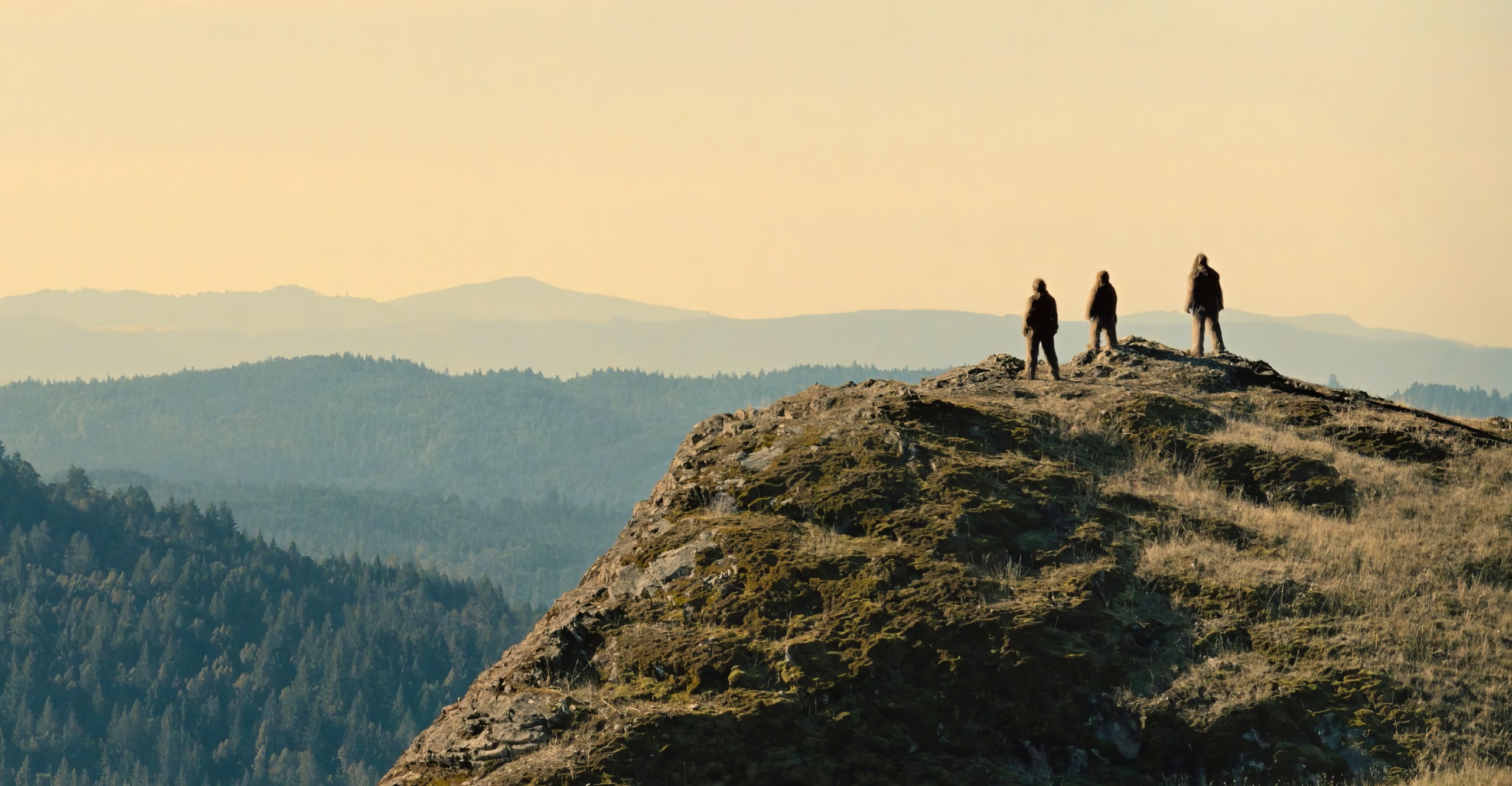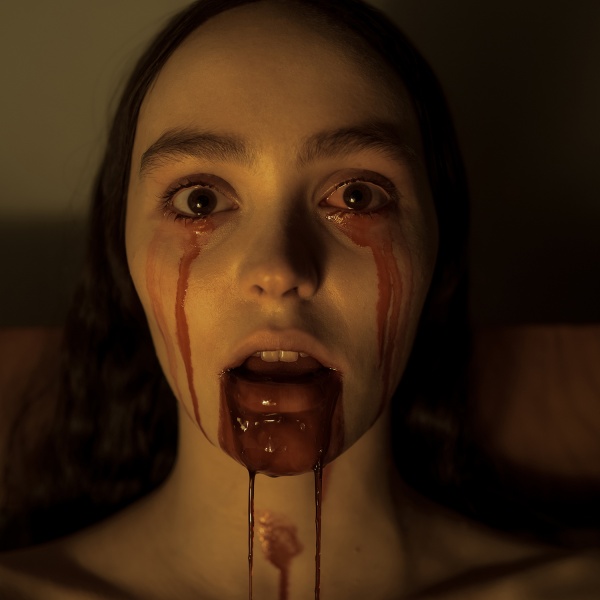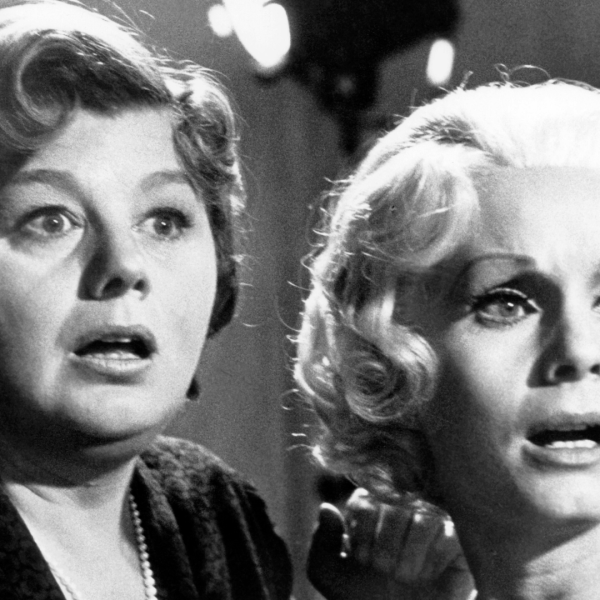With “Sasquatch Sunset,” directors David and Nathan Zellner have created one of the oddest but most entertaining movies in recent years, a tale of a Sasquatch family (played by Jesse Eisenberg, Riley Keough, Christophe Zajac-Denek, and Nathan Zellner) whose relationships are explored with equal amounts of lowbrow humor and affecting poignancy. The Sasquatches’ inner lives are clearly and hilariously conveyed by the actors, a remarkable achievement given that there’s not a single line of dialogue in the entire film (unless you count the creatures’ assorted grunts and yells). The reversion to silent film techniques adds to the movie’s sense of wonder and humor, giving “Sasquatch Sunset” a pleasing sense of innocence that’s paradoxically the result of some extremely sophisticated filmmaking.
For the Zellners, the initial conversations with the actors were primarily technical ones about movement and body language. “We shared a lot of primate videos and talked about how to create a cohesive species with movements and vocalizations,” Nathan told IndieWire, adding that the filmmakers also referenced the infamous Patterson-Gimlin film shot in 1967 that became a source of decades-long controversy as viewers tried to authenticate or debunk its ostensible footage of a Sasquatch in the wild. “We used that to see the pose and how it walks because it’s just so ingrained in people’s minds. We started with that as a baseline and then built on it with different ape footage to get everybody on the same page.”
On the script level, the Zellners had the same kinds of conversations with the actors they would on a more conventional movie. “It was just talking through the family unit and how they interact with each other and their basic needs,” Nathan said. “What are the intentions of these characters, and what are they going through over the course of a year, and how do they push and pull each other?” The trick was getting all of this across without words and under heavy prosthetic makeup. “We learned together how to act through the makeup the best we could, because none of us had ever done that before.”
According to David, getting the makeup design correct was key. “We wanted them to be anatomically correct,” he told IndieWire, “which is admittedly absurd, but it’s part of an effort to normalize these creatures as much as possible, so that in some ways it’s just like watching another nature documentary about a family of chimpanzees or a pack of wolves.”

That normalization was reinforced by the shooting conditions, as the Zellners worked on location with natural light. “There are no sound stages or anything like that,” David said. “We were deep in the Redwood forest, doing everything we could to ground these mythical creatures with a sense of naturalism to be able to relate to them. That created a lot of challenges, because when you’re not in the safety of a sound stage, you’re out there battling the elements, but for us, it gave a kind of legitimacy to the creatures to place them in real environments as much as possible.”
Further legitimacy came from putting the actors through a “Sasquatch camp,” a week-long workshop during which Eisenberg brought in a movement coach who had studied under Marcel Marceau. “We really took that time to interact with each other as these creatures and make sure we were all moving the same way and talking to each other the same way,” Nathan said. “We were kind of inventing a species, and we wanted to make it seem like not only do these creatures all belong to that same species, but they all have a family connection that the audience can really understand. I think part of telling the story is making you understand right away how close they are.”

The filmmakers found that the actors’ eyes were their most useful storytelling tool, one reason why they and creature designer Steve Newburn opted not to use contact lenses or any kind of visual effects in that area. “We wanted to make sure that the actors could express themselves through their eyes and really convey emotion,” Nathan said. “We felt like the audience would be able to connect much easier if they saw that humanity, because everybody has that experience with animals; when you see your dog looking at you in a certain way, it feels like you understand what it’s thinking, and that’s just because of the way its eyes are moving.”
In post-production, the Zellners discovered that the subtlety of the actors’ expressions drove the edit in ways different from a film that had the benefit of dialogue. “Tracking the subtlety of looks and how that could influence when to cut was interesting,” David said. “Sometimes what would normally be a sentence would just be someone looking over and looking back, and you would get everything you needed out of that glance. That was a fun thing to play with.”
Ultimately, the process in the editing room and on set was largely intuitive, as the Zellners tried to maintain a delicate balance between comedy and heartfelt drama. “So much of this is just about setting a tone, because there’s not an easy comp for it,” David said. “So from square one with the cast and crew and financiers and everyone else, we tried to make it clear what the boundaries are within which the tone exists. And that makes our jobs easier because then it gives people within those boundaries so much room to put their own signature on the work.”





